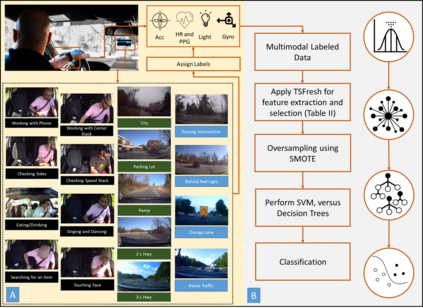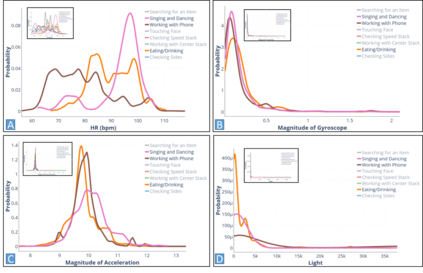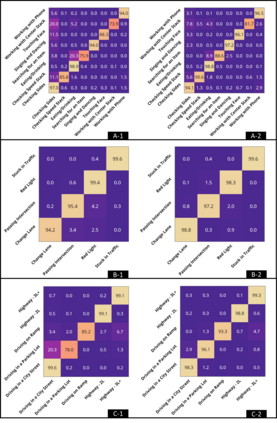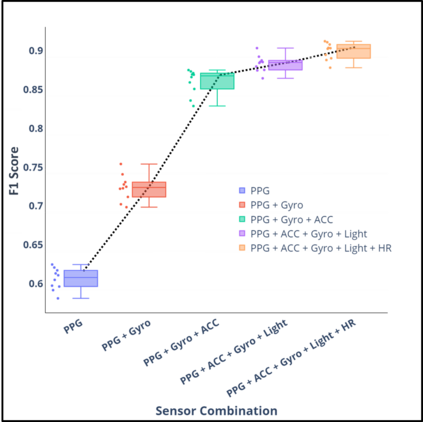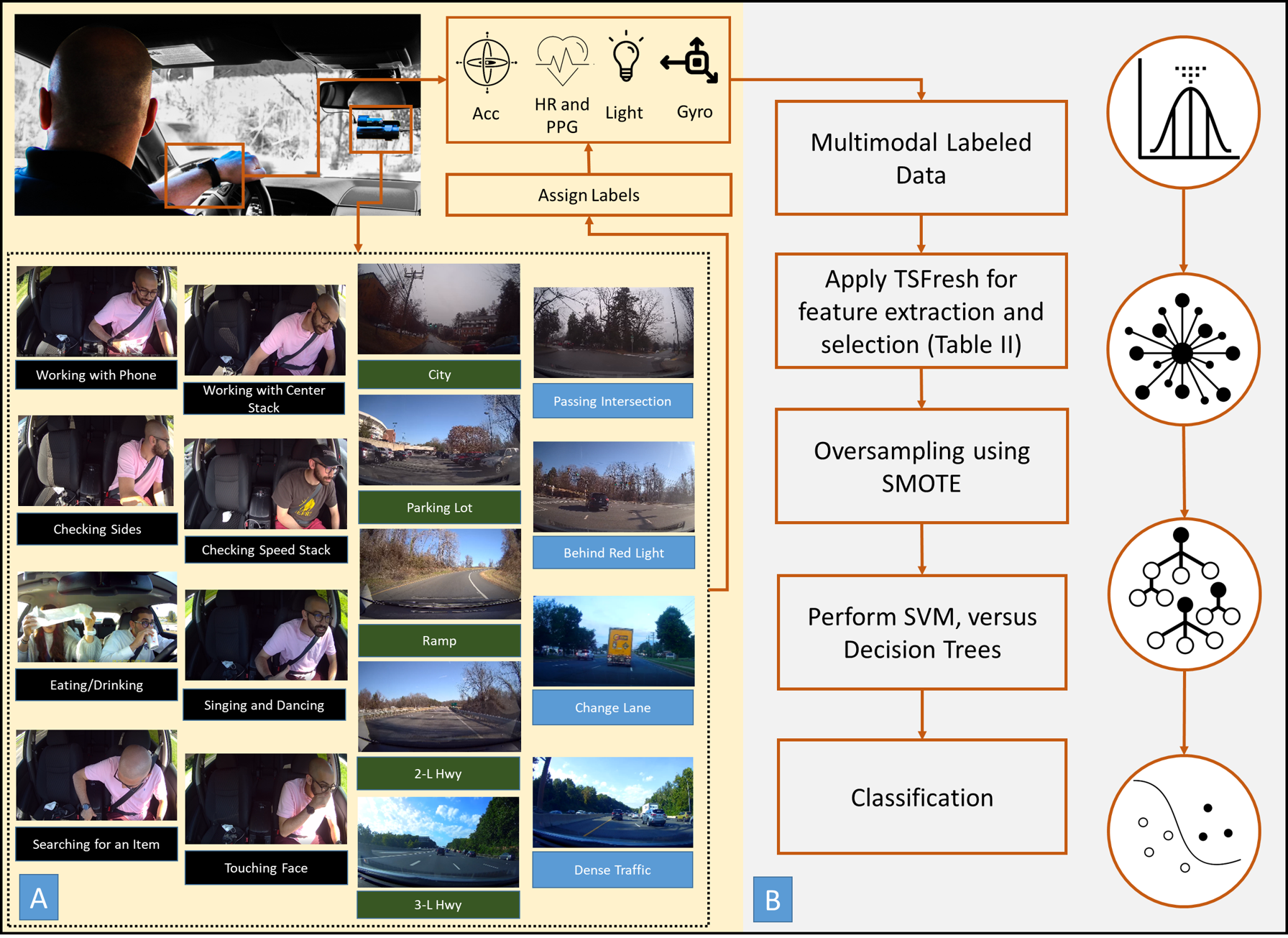Integrating driver, in-cabin, and outside environment's contextual cues into the vehicle's decision making is the centerpiece of semi-automated vehicle safety. Multiple systems have been developed for providing context to the vehicle, which often rely on video streams capturing drivers' physical and environmental states. While video streams are a rich source of information, their ability in providing context can be challenging in certain situations, such as low illuminance environments (e.g., night driving), and they are highly privacy-intrusive. In this study, we leverage passive sensing through smartwatches for classifying elements of driving context. Specifically, through using the data collected from 15 participants in a naturalistic driving study, and by using multiple machine learning algorithms such as random forest, we classify driver's activities (e.g., using phone and eating), outside events (e.g., passing intersection and changing lane), and outside road attributes (e.g., driving in a city versus a highway) with an average F1 score of 94.55, 98.27, and 97.86 % respectively, through 10-fold cross-validation. Our results show the applicability of multimodal data retrieved through smart wearable devices in providing context in real-world driving scenarios and pave the way for a better shared autonomy and privacy-aware driving data-collection, analysis, and feedback for future autonomous vehicles.
翻译:将驱动器、视网膜内和外部环境的指针整合到车辆的决策中,是半自动车辆安全的核心。已经开发了多种系统,为车辆提供上下文,通常依靠视频流捕捉司机的物理和环境状态。虽然视频流是一个丰富的信息来源,但提供上下文的能力在某些情况下具有挑战性,例如低光度环境(例如夜间驾驶)和高度隐私侵入性。在这项研究中,我们通过智能观察利用被动感应对驾驶环境要素进行分类。具体来说,我们利用自然驾驶研究中15名参与者收集的数据,以及使用随机森林等多机算学习算法,我们将驾驶者活动(例如,使用电话和吃东西)、外部活动(例如,路过交叉和车道变化)和道路外部特征(例如,在城市驾驶和高速公路驾驶,平均为94.55、98.27和97.86 %,通过10倍的交叉估价,我们的成果显示,在真实的驱动力背景下,通过智能的自主性数据回收方式和智能的数据收集工作,在现实的机动性机动性机动性机动性分析中,展示了在可修复的机动性机动性机动性机动性方面,在现实和智能机动性机动性方面,展示中提供了更好的数据收集。我们的成果,展示,在现实和智能机动性分析中,展示中,在可恢复和智能的机动性方面,展示中提供了一种可复制的数据收集。

